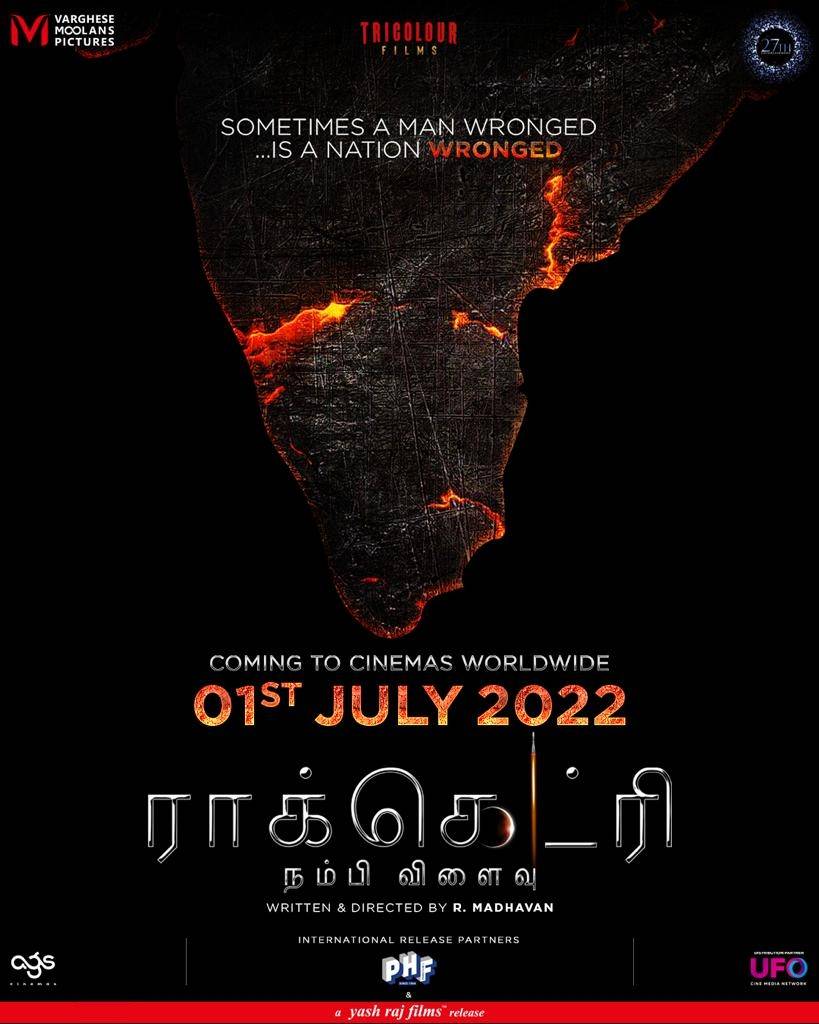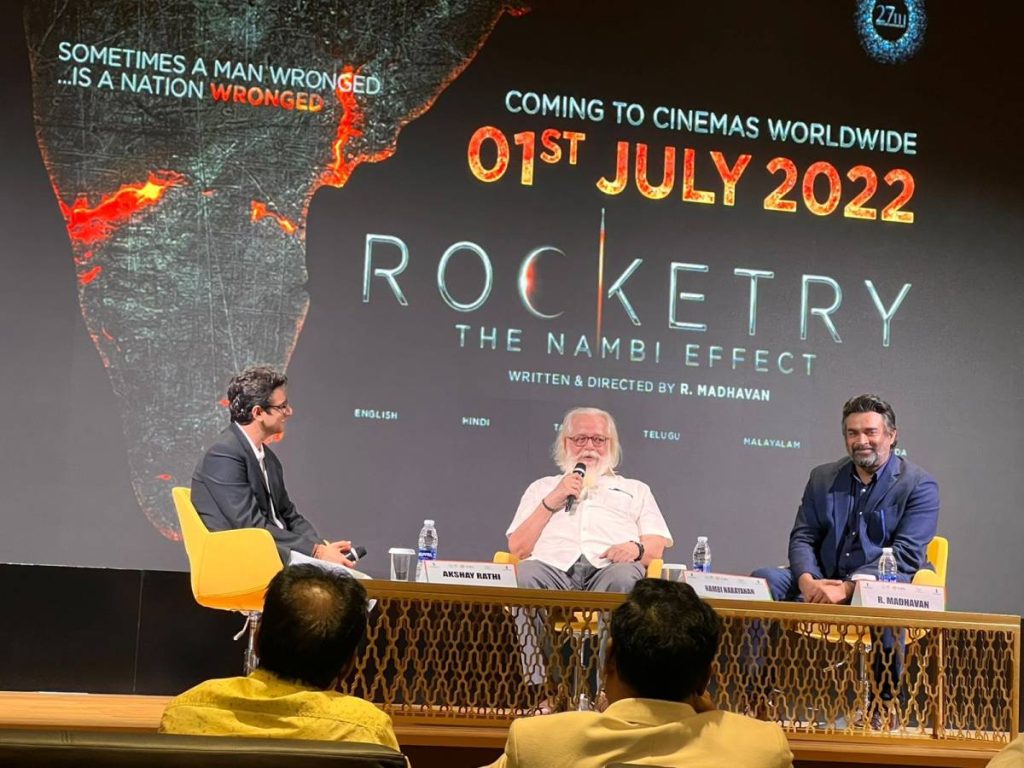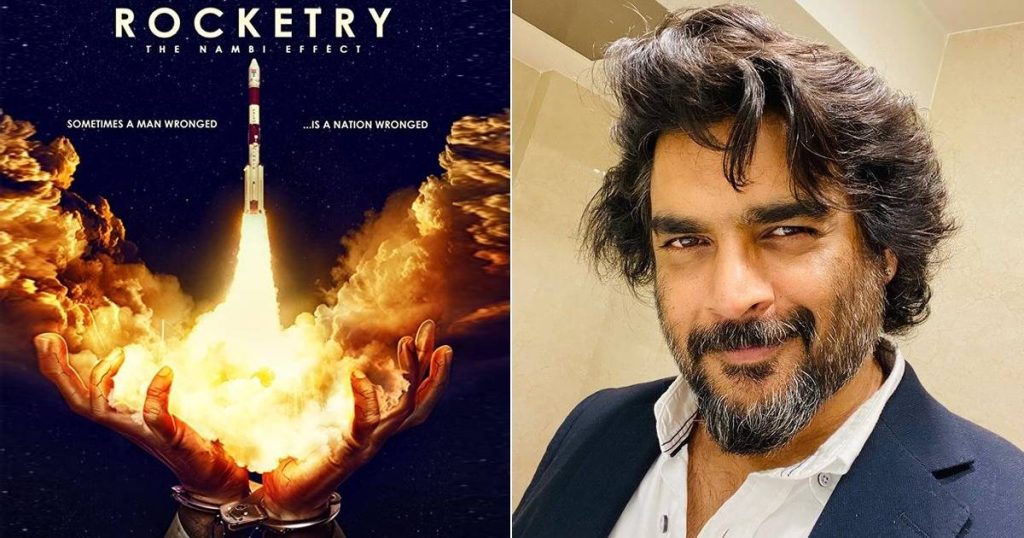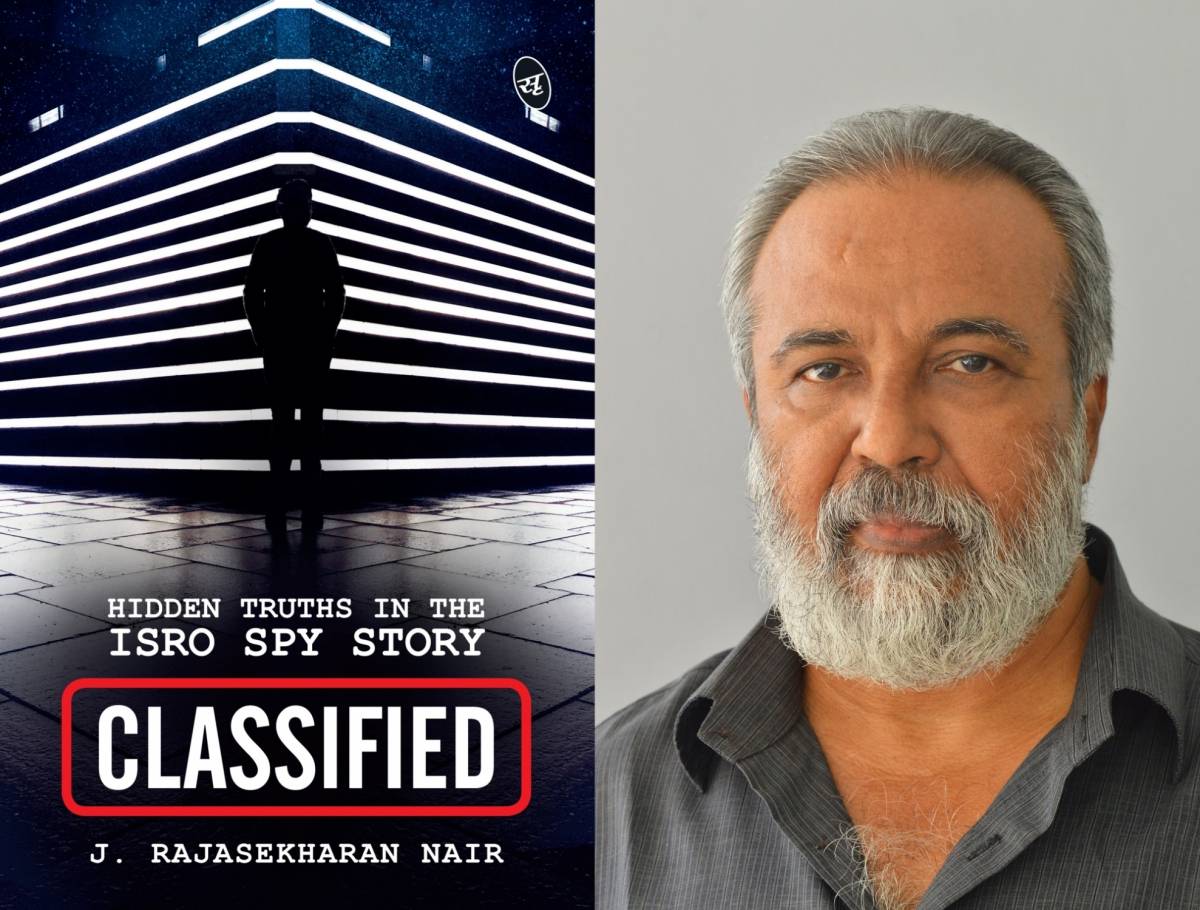The visuals that I shot during these visits were later used for the documentary, ‘Nambi: The Scientist’. It was indeed an experience for making a movie in a larger frame…Prajesh Sen speaks with Arun Lakshman
The movie ‘Rocketry: The Nambi Effect’ released globally on July 2 and is gaining good reviews as well as positive word of mouth.
The movie is about the life and struggles of the country’s eminent scientist, Dr. Nambi Narayanan who was a senior scientist in the ISRO and later was alleged of being involved in espionage.
He fought the case and won it and got acquitted of all charges and even made the police pay him compensation for undue detention in police custody and trauma.
Scripted and directed by actor R. Madhavan, the movie has been co-directed by Prajesh Sen, who had written a book on Nambi Narayanan and made a documentary on the eminent scientist.

We caught up with Prajesh Sen, who has acted in several hit movies in the Malayalam film industry after quitting his job as a journalist in a leading Malayalam newspaper.
You are part of the movie Rocketry: The Nambi Effect, Please share your experiences about the film.
A: Experience means my close association with Nambi Narayanan Sir. I was in school when I first heard about the ISRO spy scandal and had a feeling that it was true. But later when I grew up, read a lot, and developed my own social outlook, I could understand that he was wronged.
Later, I became a professional journalist and tried to get his interview but he didn’t relent. However, after constant perusal, I could get his interview and my interview with him was a big hit which was titled ‘Is there an answer to my nine questions’.
Then I wrote a book on him, ‘Ormakalude Brahmanapatham’, which took five years for me to complete. I travelled to places where he had been to, including Vernon in France, and there I took visuals which later turned out to become my documentary on him, ‘Nambi, the Scientist’.
Q: Popular actor R. Madhavan is casted as Nambi Narayanan and how was the feel of Madhavan as Nambi?
A: In fact Madhavan the actor has transformed into Nambi Narayanan literally and he has totally become the great scientist on screen. All the mannerisms of Nambi Narayanan were properly displayed by Madhavan. We never felt that he was acting but was living the role of Nambi sir. On watching the movie in a theatre among the crowd, I turned highly emotional at the performance of R. Madhavan.
Q: Was your documentary, ‘Nambi: The Scientist’, a good experience in the larger frame of the movie?
A: Yes, I did the documentary on my experience with travelling with Nambi Narayanan sir during the research on his book. Had the experience of visiting the scientific labs where he had conducted research, his studies, and everywhere.
The visuals that I shot during these visits were later used for the documentary, ‘Nambi: The Scientist’. It was indeed an experience for making a movie in a larger frame.

Q: R. Madhavan has played the role of Nambi Narayanan and he acted in the movie as a 27-year-old Nambi and later as a 75-year-old Nambi Narayanan also. How was the feeling while working with him during the shoot?
A: Yes, the period of Nambi Narayanan from the age of 27 to him turning the age of 75 was portrayed in the movie. This led to the movie taking two years to shoot to be completed.
Madhavan had even bleached his beard and hair to get the grey look and had taken enormous effort and strain to bring the body condition to that of a 27-year-old Nambi Narayanan and later as a 75-year-old. This is the first time that I am seeing an actor taking this much strain and this was a totally dedicated effort on the part of R. Madhavan.
Q: Madhavan has gone on record that this was his best film ever. Do you have the same feel?
A: There is no confusion in stating that this is the best role played by R. Madhavan in his career. He has put his soul and heart and physique into the movie. He has turned each moment into the scientist Nambi Narayanan. This is his best performance, best makeover, and best direction.
Even if this was his first directorial venture, he had performed exceedingly well. As a co-director of the movie, I had the feel of his total performance in the movie as an actor and director. His thirty years of acting experience was converted in the making of the movie.
Q: You had written a book on Nambi Narayanan and later did a documentary on the Rocket scientist. Did these experiences help you during the direction of the movie?
A: The experiences I had in writing a book on him and later making a documentary on him helped me a lot during the shooting of the movie. Also, I traveled quite a lot with Nambi Narayanan Sir.
All these helped during the shooting of the movie. I had a personal rapport with him which can be termed a friendship and this helped me during the shoot. This has helped the totality of the movie as such.
Q: Will the movie have a major impact across the globe as this is not a movie on a sportsperson or a movie star but on a scientist. Your comment?
A: After watching this movie, the people would think of themselves — not only scientists I mean, but each and every individual who watches this movie will think about themselves in the shoes of the great scientist and how he was wronged and targeted.
The life of Nambi Narayanan, the scientist will be etched in golden letters in the hearts of the people who had watched the movie.
Everyone who had watched the movie praised Nambi Narayanan sir and said that they were ignorant as to what a big man he was. People knew him only as a person who had escaped after being charged in an espionage case. Now the audience understood that he is beyond that and had made major contributions to science.
Each individual who has watched the movie will understand that he is such a great nationalist and how much people will celebrate Madhavan as an actor, and so will Nambi Narayanan, the scientist be celebrated. The movie will give great recognition to the scientific community of the country and the world.
Q: How was the experience during the shoot of this movie?
A: I had completed the movie ‘Captain’ and was doing my preliminary discussions for my movie, ‘Vellam’ when I joined this team as a co-director. I could learn several things from Madhavan Sir and how he was molding actors and even as a co-director,
I was made comfortable by him. Sync sound was done by people who have been exposed to that area of expertise. Graphics, including VFX, was done by a big company called Assemblage and I had the opportunity to visit their premises and cooperate with them giving me a great experience.

The camera for the movie was wielded by Sreesha Roy from West Bengal, who is an FTII Pune product and this was his sixtieth movie. His experience helped us enjoy the style of his work. The editor of the movie was Bijith Bala who is the editor of all my movies and his experience and professionalism helped the movie and the team very much.
The movie was made on a wider platform and Shah Rukh Khan and Suriya did cameo roles in the movie. I am totally indebted to R. Madhavan and Nambi Narayanan Sir for having given me an opportunity to be part of this movie which will be a game-changer.


